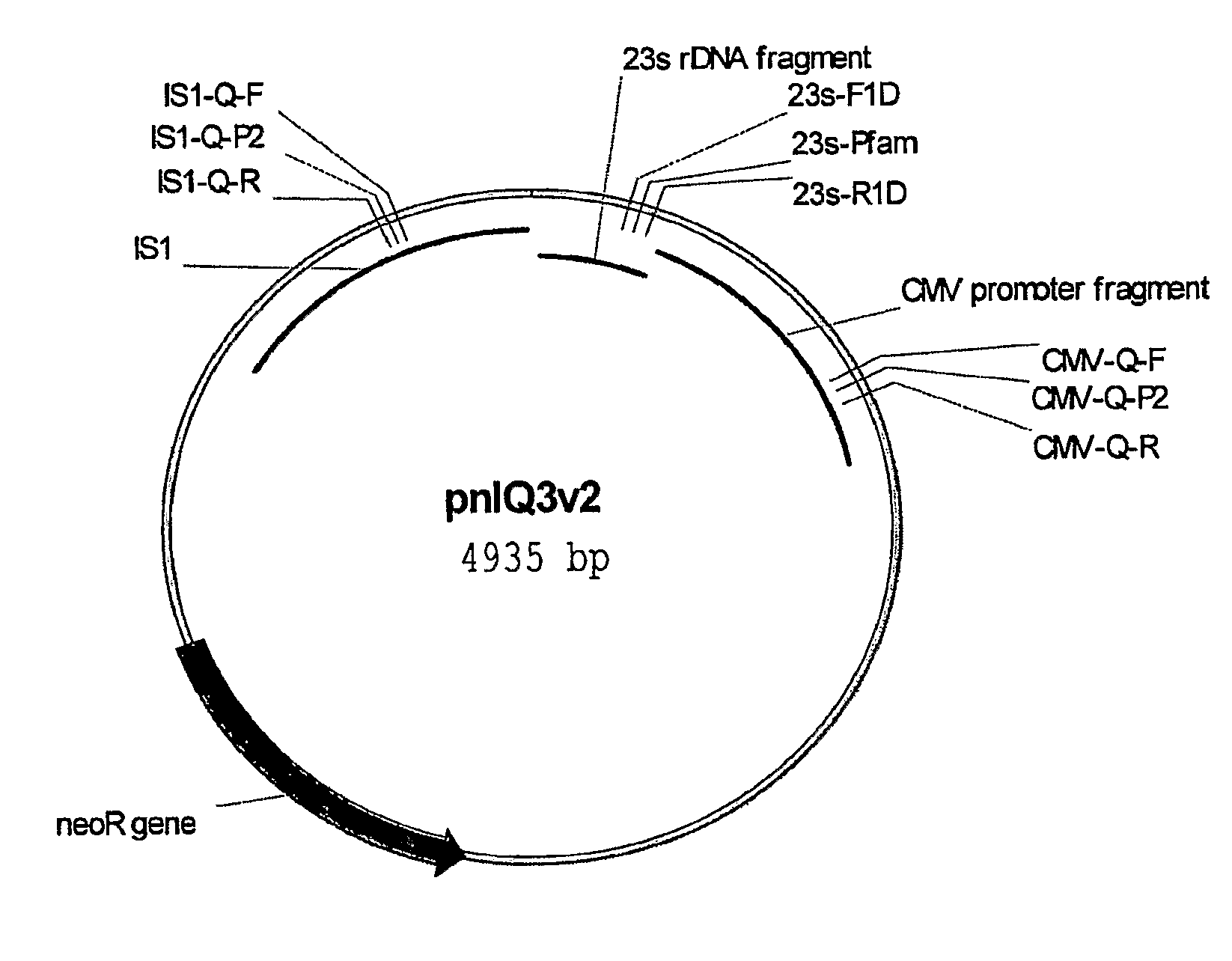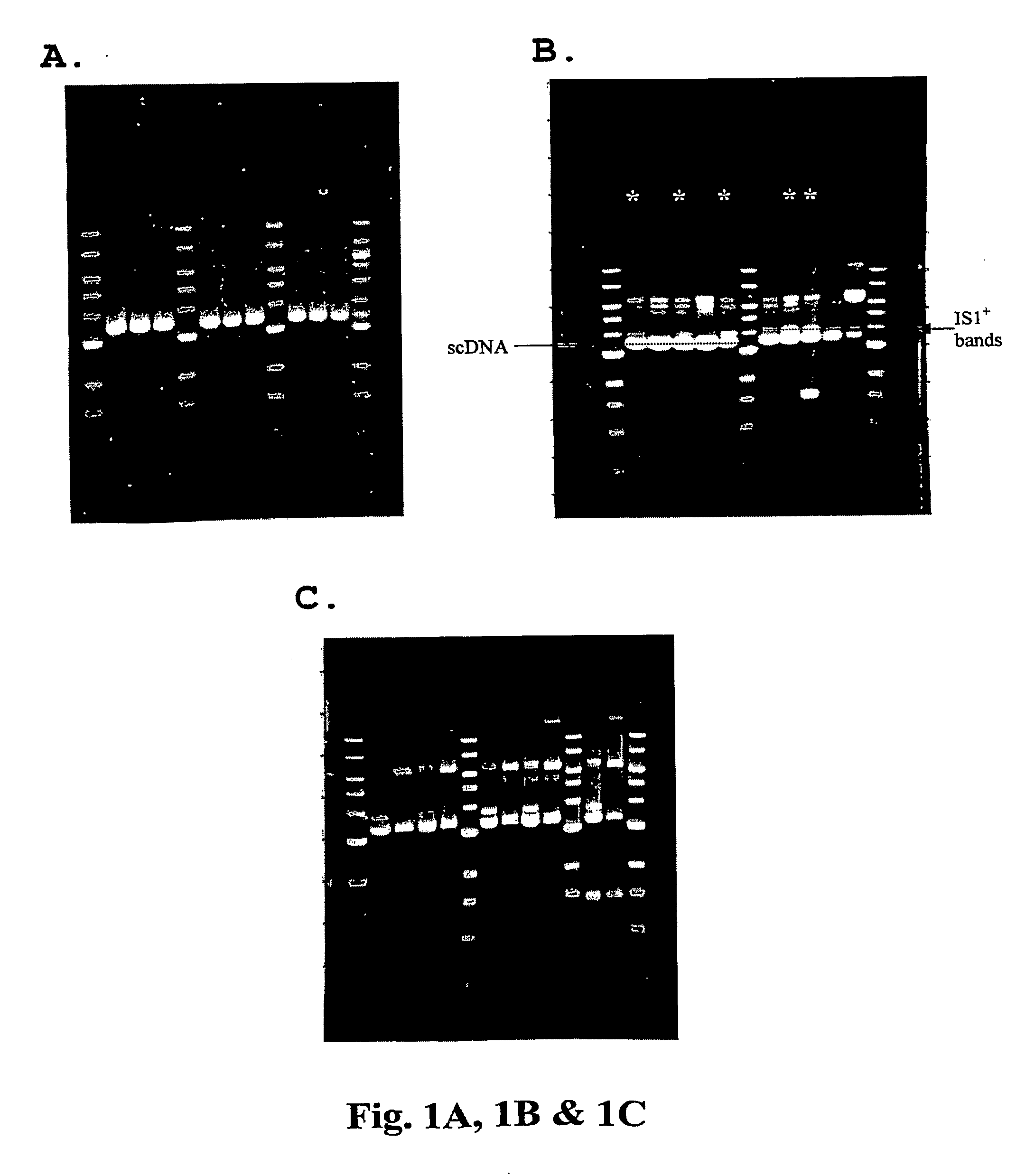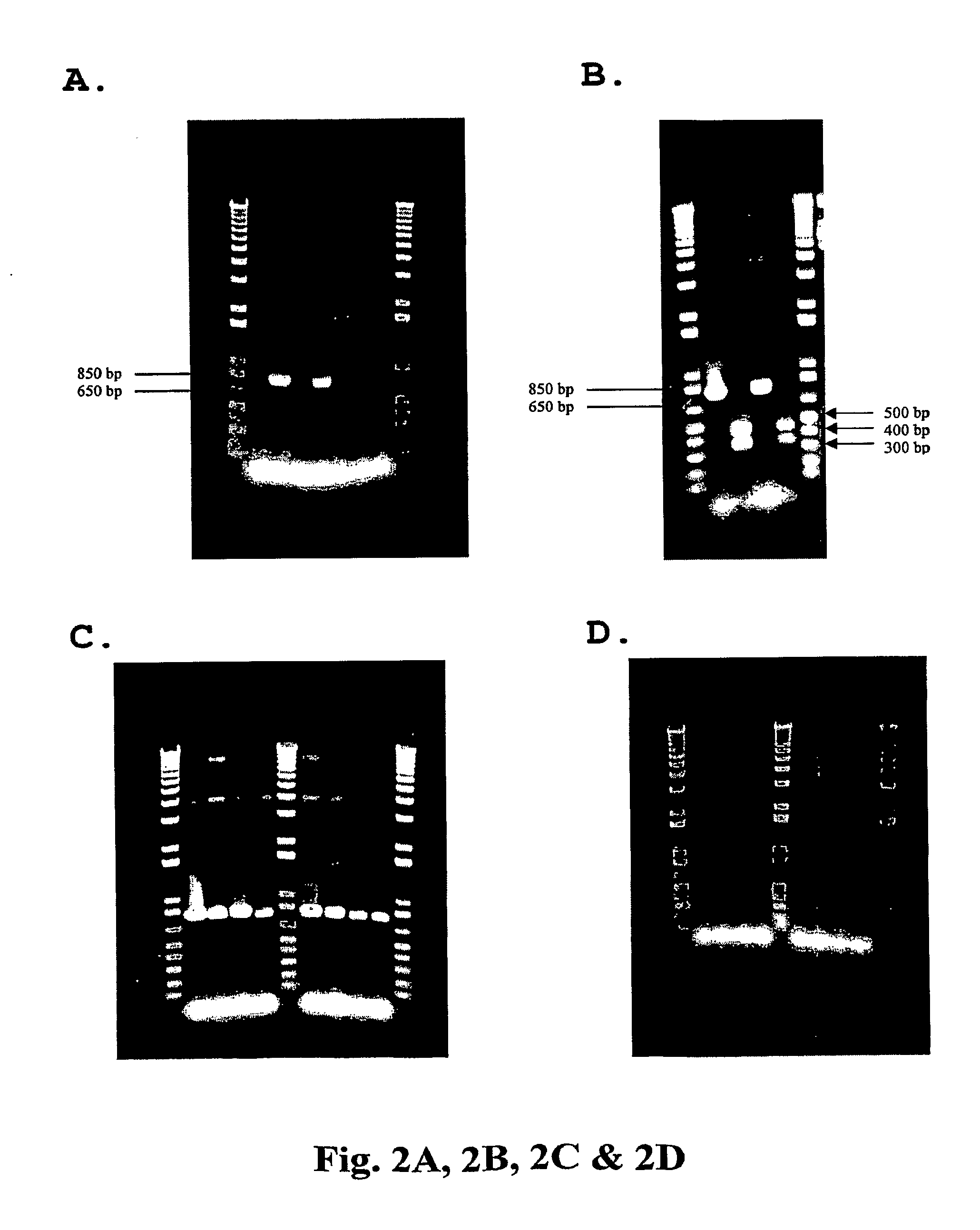Method For Genetic Selection Of High-Plasmid Producing E. Coli Clones
a technology of plasmids and clones, applied in the field of genetic selection of high-plasmid producing e. coli clones, can solve the problems of high labor and time consumption, heterogeneous clonal subtypes with respect to plasmid content, etc., and achieve low specific productivity, low plasmid copy number, and increase in is1 insertional mutagenesis
- Summary
- Abstract
- Description
- Claims
- Application Information
AI Technical Summary
Benefits of technology
Problems solved by technology
Method used
Image
Examples
example 1
Identification of IS1 Transposon in DNA Vaccine Plasmid
[0080]Strains, DNA vaccine plasmids and growth media—The host strain for all DNA vaccine constructs is E. coli DH5 [F− deoR recA1 endA1 hsdR17(rk−, mk+) supE44λ− thi-1 gvrA96 relA1]. The strain was originally purchased from Invitrogen (Carlsbad, Calif.; formerly Gibco BRL), adapted in the defined medium DME-P5, and made electrocompetent for subsequent transformations. E. coli DH5α [F−φ80lacZΔM15 Δ(lacZYA-argF) U169 deoR recA1 endA1 hsdR17(rk−, mk+) gal− phoA supE44λ− thi-1 gyrA96 relA1] was purchased as electro-competent cells from Invitrogen (Carlsbad, Calif.). Construction of the HIV DNA vaccine plasmid V1Jns-nef is described in detail in International PCT Application Number PCT / US00 / 34162, filed Dec. 15, 2000 (published as International Publication Number WO 01 / 43693 on Jun. 21, 2001). Briefly, the DNA vaccine plasmid consists of a pUC19-derived bacterial origin of replication and neomycin / kanamycin resistance gene (nptII) fo...
example 2
Comparison of IS1 Content in High- and Low-Producer Genomes Using Restriction Fragment Length Polymorphism (RFLP) Analysis
[0086]Strains, DNA vaccine plasmids and growth media—See, supra, Example 1. Additionally, unadapted, untransformed cells were purchased from Invitrogen and maintained in LB medium. Construction of the HIV DNA vaccine plasmid V1Jns-tpa-nef (5540 bp) is described in detail in International PCT Application Number PCT / US00 / 34162 (supra). Construction of the HIV DNA vaccine plasmid V1Jns-tpa-pol (7516 bp) is described in detail in International PCT Application Number PCT / US00 / 34724, filed Dec. 21, 2000 (published as International Publication Number WO 01 / 45748 on Jun. 28, 2001). Construction of the HIV DNA vaccine plasmid V1Jns-tpa-gag (6375 bp) is described in detail in International PCT Application Number PCT / US98 / 02293, filed Feb. 3, 1998 (published as International Publication Number WO 98 / 34640 on Aug. 13, 1998).
[0087]Shake flask cultivation of and DNA isolation ...
example 3
IS1 Transposon Integration Sites in V1Jns Plasmids
[0094]Material and Methods—Plasmid DNA from V1Jns-nef clone NLB-5 propagated in DME-P5 medium was obtained as described in Example 1. A total of sixteen oligonucleotide primers complementary to the full, insertion-free plasmid were designed to anneal in ˜700-bp increments in both the forward (8) and reverse (8) directions. A second set of primers were specific to the forward and reverse ends of the IS1 insertion sequence. A series of 32 PCR reactions were established consisting of (i) one of the 16 V1Jns-nef-specific primers and one of the 2 IS1-specific primers, (ii) clone NLB-5 plasmid DNA as template, (iii) and HotStarTaq PCR Master Mix Reagent (Qiagen). The PCR reactions were run using standard protocols. Each sample was analyzed on a 0.7% agarose gel to identify amplified fragments. The presence of an amplified fragment is a preliminary indication of a vector-IS1 junction, but does not eliminate the possibility of mis-priming ev...
PUM
| Property | Measurement | Unit |
|---|---|---|
| Fraction | aaaaa | aaaaa |
| Fraction | aaaaa | aaaaa |
| Fraction | aaaaa | aaaaa |
Abstract
Description
Claims
Application Information
 Login to View More
Login to View More - R&D
- Intellectual Property
- Life Sciences
- Materials
- Tech Scout
- Unparalleled Data Quality
- Higher Quality Content
- 60% Fewer Hallucinations
Browse by: Latest US Patents, China's latest patents, Technical Efficacy Thesaurus, Application Domain, Technology Topic, Popular Technical Reports.
© 2025 PatSnap. All rights reserved.Legal|Privacy policy|Modern Slavery Act Transparency Statement|Sitemap|About US| Contact US: help@patsnap.com



